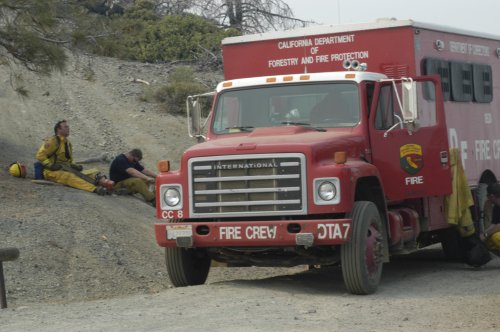- Elizabeth Larson
- Posted On
Expected containment date for Walker Fire changed to Sunday
The 14,500-acre fire, located about 14 miles east of Clearlake Oaks in an area that is mostly remote wildland, had about 329 firefighting personnel on scene Saturday, according to Cal Fire.
Cal Fire spokesman Kevin Colburn said the fire is expected to be fully contained by Sunday, which will mean it will be completely surrounded by fire lines.
But the work isn't over yet, said Colburn.
“There's a difference between contained and controlled,” he said.
The latter term means the fire is out. That, said Colburn, likely won't happen for at least a few days after containment.
Many firefighters are either being sent to other fires or sent home, said Colburn.
But before Cal Fire moves to the next incident, they'll complete some rehabilitation of the area which has already begun, he said. That includes repairing some damage done during firefighting, such as line clearances, and moving dirt so that it doesn't get into creeks.
Cal Fire puts the cost to fight the fire to date at $4.1 million.
Work on the 3,560-acre, four-fire Soda Complex in the Mendocino National Forest's Upper Lake Ranger District also continued Saturday, according to forest officials. Those fires were caused by last weekend's lightning storms.
The complex includes the Big Fire, 1,400 acres and 40-percent contained, the Back, 1600 acres, 85-percent contained; the Mill, 400 acres, 0-percent contained; and the Monkey Rock, 750 acres, 0-contained. Total containment was at 55 percent Saturday.
There have been a total of two injuries to firefighters. Thirty structures continued to be threatened, with two destroyed, according to the report.
On Saturday, the California Highway Patrol reported that the brakes failed on a very large truck traveling up Elk Mountain Road to take supplies to firefighters.
The truck crashed and injured the driver, according to CHP. A REACH helicopter was requested but visibility concerns prevented it from going into the area. Cal Fire was planning to use its own helicopter to transport the driver out, but no further information was available Saturday.
Another 1,051 acres are burning elsewhere in the forest. Those fires on Saturday triggered closures on the Sanhedrin and Yuki Wildernesses in the Mendocino County portion of the forest, according to spokesperson Phebe Brown, in order to keep the public safe and help fire suppression efforts. The Yolla Bolly-Middle Eel Wilderness also was closed late last week.
Lake Pillsbury's Pogie Point Campground remains closed to the public, because it's being used as a sleeping area for firefighters, officials reported.
Elk Mountain Road from the Bear Creek Road junction to Soda Creek have been closed by Lake County due to fire activity associated with the Back incident. However, officials reported that the public can still gain access to Pillsbury Lake via Potter Valley (County Roads 240 and 301 to the Soda Creek Store).
Anyone visiting the forest should be aware of the heavy fire vehicle traffic, as well as smoke and haze, according to officials.
In Mendocino County, 60 active fires continued to burn Saturday, with 30,100 acres burned and only 5 percent containment, according to Cal Fire.
The cost to battle those fires, which have caused evacuations all over Mendocino County, is currently estimated at $6,660,000, officials reported.
E-mail Elizabeth Larson at This email address is being protected from spambots. You need JavaScript enabled to view it..
{mos_sb_discuss:2}

 How to resolve AdBlock issue?
How to resolve AdBlock issue? 










